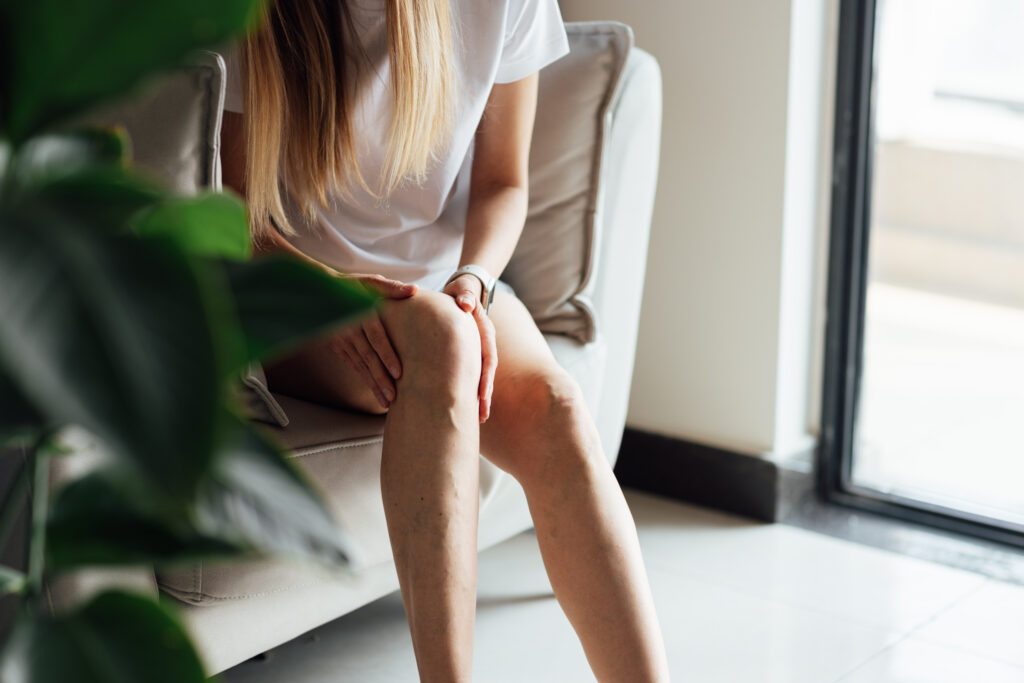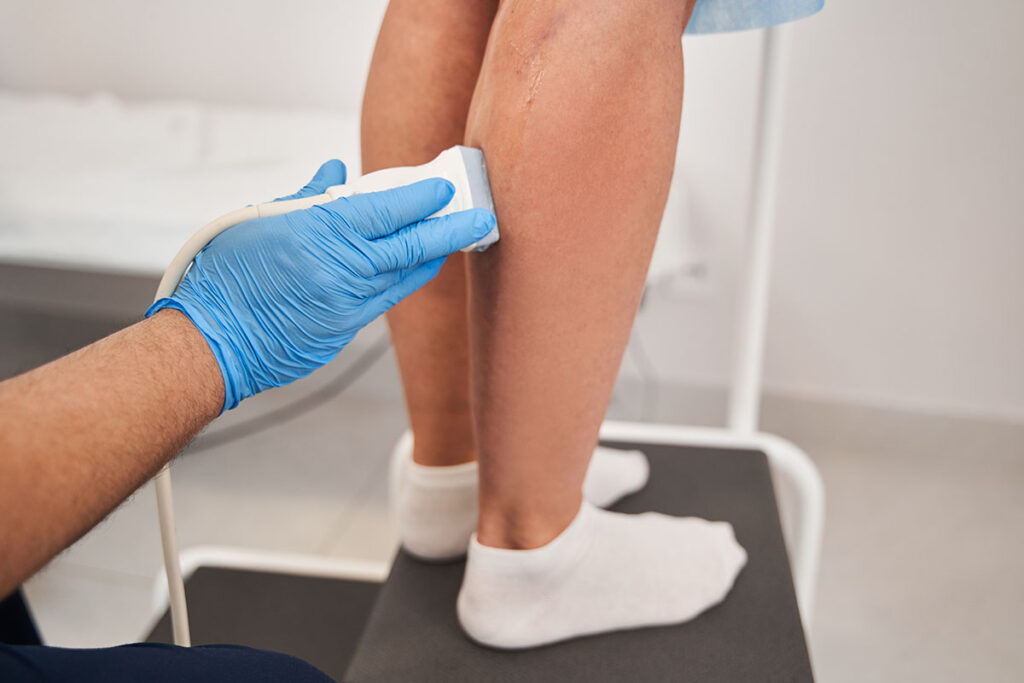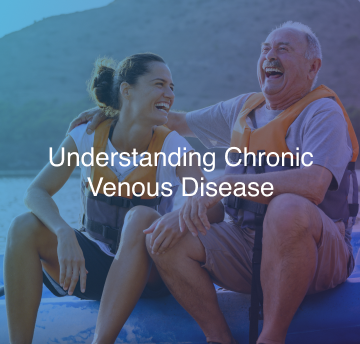Risk Factors
Many times, CVD goes undiagnosed and undertreated.27 There are several risk factors associated with chronic venous disease (CVD). 4,28 Varicose veins occur about 3 times more often in females than in males.4 It’s important that men still get evaluated if they are having symptoms or suspect they are at risk.
- Family history of varicose veins
- Deep vein thrombosis (DVT) or history of blood clots


- Female sex
- Multiple pregnancies
- Age over 50
- Long periods of standing or sitting
- Smoking
- Obesity

Signs and Symptoms
Those who receive treatment from a vein specialist may get relief from their symptoms and avoid worsening or advancing of the disease over time. Increased pressure and enlargement of the leg veins from valve dysfunction and venous reflux cause the veins to swell and progress to more painful symptoms as they push on nearby nerves and skin.29 CVD is a progressive disease. Without treatment, signs and symptoms may worsen. CVD can develop into a more serious form of vein disease called chronic venous insufficiency (CVI) that includes advanced CVD symptoms like leg swelling, skin changes and, in severe cases, venous ulcerations.4
Know the Warning Signs
While some individuals can still be affected by Chronic Venous Disease (CVD) even in the early stages, it’s important to know what to look for and to keep a watchful eye for signs and symptoms.4,28 Often times, these issues can seem like the normal part of aging but visible venous disease is far more than just a cosmetic problem.6,14
- Spider veins or varicose veins
- Heaviness, aching, tightness or fatigue
- Discomfort, pain or swelling


- Restlessness or muscle cramping
- Numbness or itching
- Skin texture or color changes
- Ulcer or wound
How is CVD Diagnosed?
Patients who present with risk factors as well as signs and symptoms should be referred to a vein specialist who is experienced in treating venous reflux disease for proper evaluation, testing and diagnosis.30 The Society for Vascular Surgery/American Venous Forum (SVS/AVF) clinical practice guidelines recommended that the evaluation of vein reflux with duplex ultrasound be performed with the patient standing whenever possible. A sitting or reverse Trendelenburg position can be used if the patient cannot stand.31
An ultrasound study will be performed to accurately diagnose venous reflux disease.

What You Need To Know
CVD is a progressive disorder. The good news is that the disease is common and treatable. Once CVD has been diagnosed, you will then be able to put together a comprehensive medical treatment plan for patients to help them better manage their symptoms. While conservative treatment, like compression stockings, can play a role, it may only offer temporary relief. It’s important to consider other minimally invasive therapies available for patients on their CVD journey. Discover if the Venclose™ Catheter Procedures may be the right treatment for your patients!


